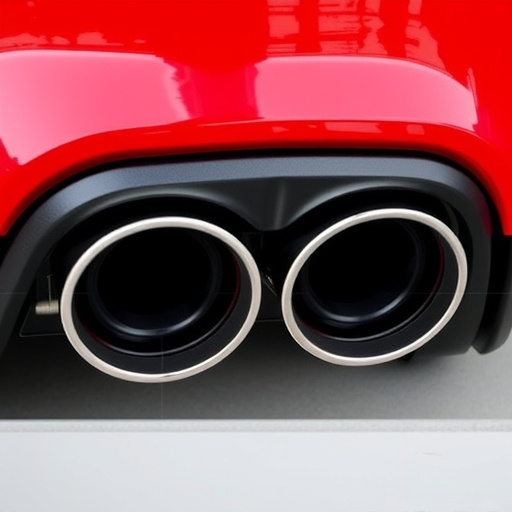Short Tube Headers: Cool Engine Compartments for Enhanced Performance
Short tube headers are a crucial component in high-performance engines, addressing heat management i…….
Welcome to an in-depth exploration of short tube headers, a revolutionary cooling technology that has garnered significant attention in various industries. This article aims to provide a comprehensive understanding of this innovative system, its global impact, and the many aspects that contribute to its growing significance. By delving into its history, technological intricacies, economic implications, and future potential, we will uncover why short tube headers are not just a passing trend but a game-changer in the field of thermal management.
Definition: Short tube headers, also known as compact heat exchangers, are advanced cooling systems designed to efficiently transfer heat from one fluid to another. They consist of a series of short, parallel tubes through which a hot fluid flows, transferring its thermal energy to a cooler fluid passing externally.
Core Components: The fundamental components include:
Historical Context: The concept of short tube headers has evolved over several decades, building upon traditional heat exchanger designs. Early developments focused on improving efficiency and reducing size, driven by the growing need for compact and powerful cooling solutions in electronics and automotive industries. Over time, advancements in material science and manufacturing techniques have refined these headers into highly efficient, versatile thermal management systems.
Significance: Short tube headers offer several key advantages:
The influence of short tube headers extends across various sectors and regions, with key trends shaping their adoption and development:
| Region | Trends | Key Applications |
|---|---|---|
| North America | Early adopters, focusing on automotive and data center cooling. Major tech companies leading the way in R&D. | Electric vehicle (EV) thermal management, server farms, high-performance computing |
| Europe | Emphasizing sustainability and energy efficiency. Growing interest in renewable energy applications. | Solar panel cooling, wind turbine lubrication systems, green data centers |
| Asia Pacific | Rapidly growing market driven by consumer electronics and automotive industries. China leading in manufacturing. | Smartphones, tablets, electric vehicles, data centers in high-density urban areas |
| Middle East & Africa | Focusing on desert-friendly solutions for HVAC and industrial cooling. | Data centers in hot climates, desalination plants, industrial processes |
International Collaboration: Global collaboration is fostering innovation, with international partnerships and research initiatives driving technological advancements. Standardization efforts ensure compatibility and safety, facilitating cross-border adoption.
The economic landscape surrounding short tube headers is dynamic and multifaceted:
The technological frontier for short tube headers is rich with innovations that drive performance and applications:
The regulatory environment plays a crucial role in shaping the development and adoption of short tube headers:
Despite their numerous advantages, short tube headers face several challenges and criticisms:
Strategies to Overcome Challenges:
Case Study 1: Data Center Cooling Revolution
A major cloud computing company faced the challenge of cooling thousands of servers in a compact data center. They implemented a custom short tube header system, achieving significant advantages:
Case Study 2: Electric Vehicle Thermal Management
A leading electric vehicle (EV) manufacturer incorporated short tube headers into their battery cooling systems, resulting in:
The future outlook for short tube headers is promising, with several emerging trends shaping their development:
Short tube headers have emerged as a transformative technology in the field of thermal management, offering efficient, compact solutions to diverse cooling challenges. Their global impact is evident across various sectors, with ongoing advancements pushing the boundaries of what’s possible. As these headers continue to evolve, they will play an increasingly critical role in shaping the future of electronics, automotive, and industrial applications.
Q: How do short tube headers differ from traditional heat exchangers?
A: Short tube headers offer significant advantages in terms of size, weight, and efficiency compared to traditional heat exchangers. Their compact design enables them to handle high-density thermal loads in limited space, making them ideal for applications where real estate is at a premium.
Q: Can short tube headers handle extreme temperature ranges?
A: Absolutely. These headers are designed to operate across a wide temperature spectrum, from cryogenic to high-temperature applications. Advanced materials and careful design ensure stability and performance in harsh conditions.
Q: Are short tube headers suitable for all fluids?
A: While they can accommodate various fluids, the choice of material for tubes and fins is critical. Some headers may not be suitable for corrosive or highly viscous fluids without specialized coatings or designs.
Q: How do I select the right short tube header for my application?
A: Consider factors like fluid type, temperature range, space constraints, and performance requirements. Consulting with experts and referencing manufacturer specifications can guide you in making an informed choice.

Short tube headers are a crucial component in high-performance engines, addressing heat management i…….